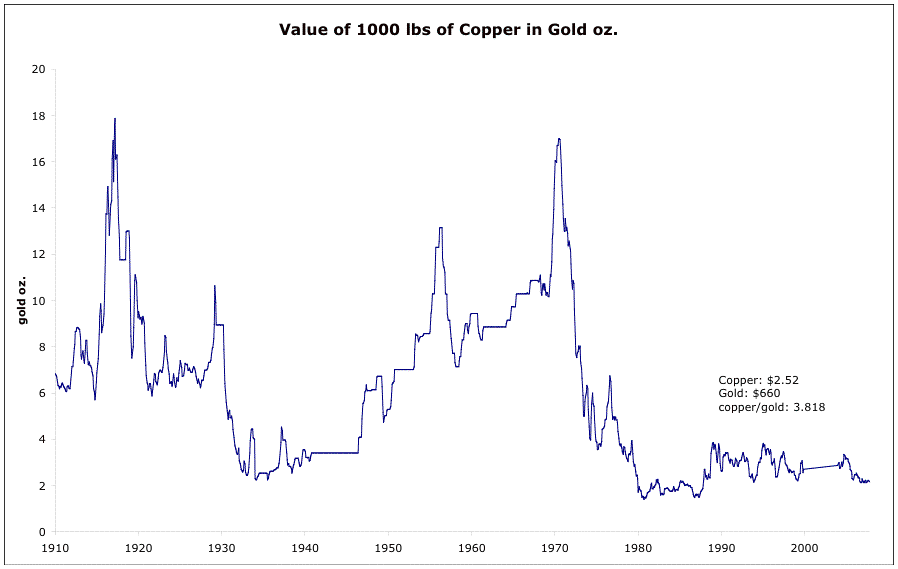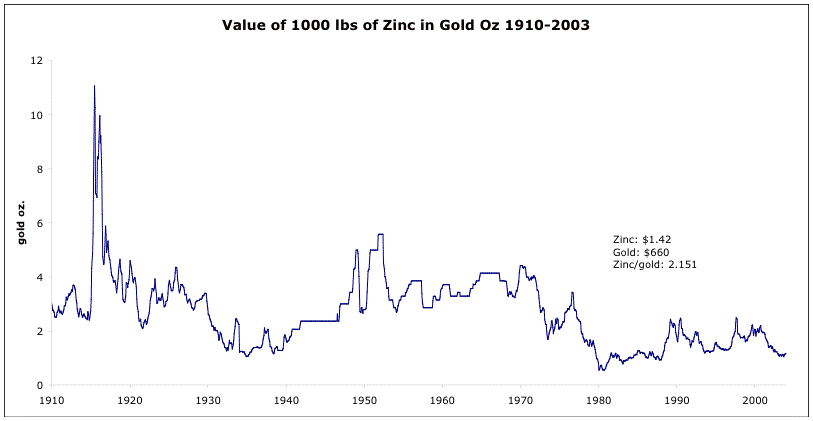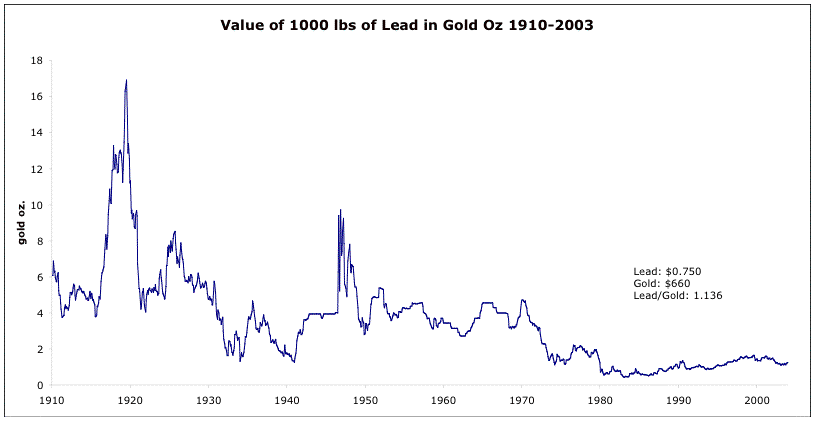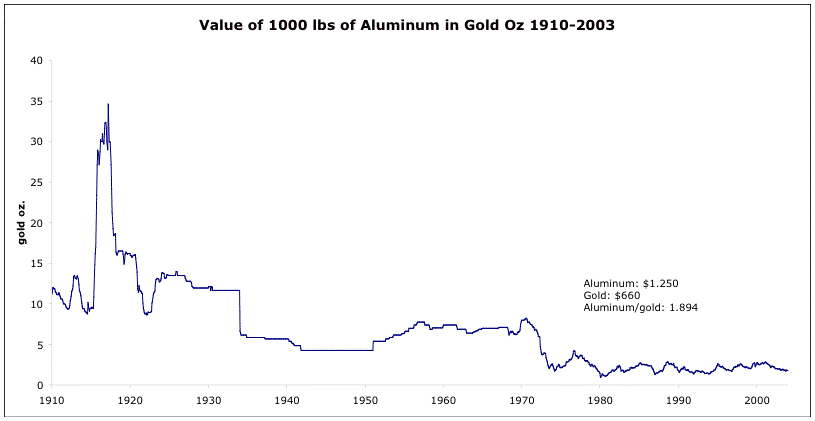The Real Prices of Commodities
February 10, 2007
Commodities are a bubble!
Har!
People have no idea today how cheap commodities are. Cheap, especially, when one considers that for extractive commodities like the metals or petroleum, there is much less of them today than there was forty years ago, in the mid-1960s, and many more people who want to use them. In the 1960s, the industrializing world — Europe, the US and Japan — had a population of about 700 million people. Today, the industrializing world numbers more like two billion people, plus there is another billion in the industrial world which is still using plenty of commodities, plus, of course, there is less of the stuff left in the ground. In practice, this means that the ore grade has been falling, and indeed the 2.0% copper ore grades of the 1960s have fallen to 0.70% today. This in turn means that a miner has to mine, crush and process almost three times as much rock for the same amount of copper. So, if copper use goes up 2x, and copper grade falls by a factor of 3x, then the mining industry must mine and process 6x as much rock to deliver the goods. Modern mining methods have made this possible, but for how long can it continue?
We’ll start with the metals. I compare metals values against the timeless benchmark of value, gold. Doing so, we find that today’s metals prices, even after doubling or tripling, are still quite cheap compared to the levels they were in the 1960s. Generally speaking, I think they can return at least to their 1960s average prices. Probably they can go higher. The graphs only go to the end of 2003, but I added today’s latest prices in text.

Wake me up when the value of 1000 lbs of copper is 10 oz of gold! Today, that would be $6.60 copper.

Zinc is already fairly close to its 1960s levels.

Lead? Cheap!

I put aluminum in a separate category, since the limiting factor in aluminum production is usually electricity rather than ore availability. Still, it’s way below its 1960s levels.

